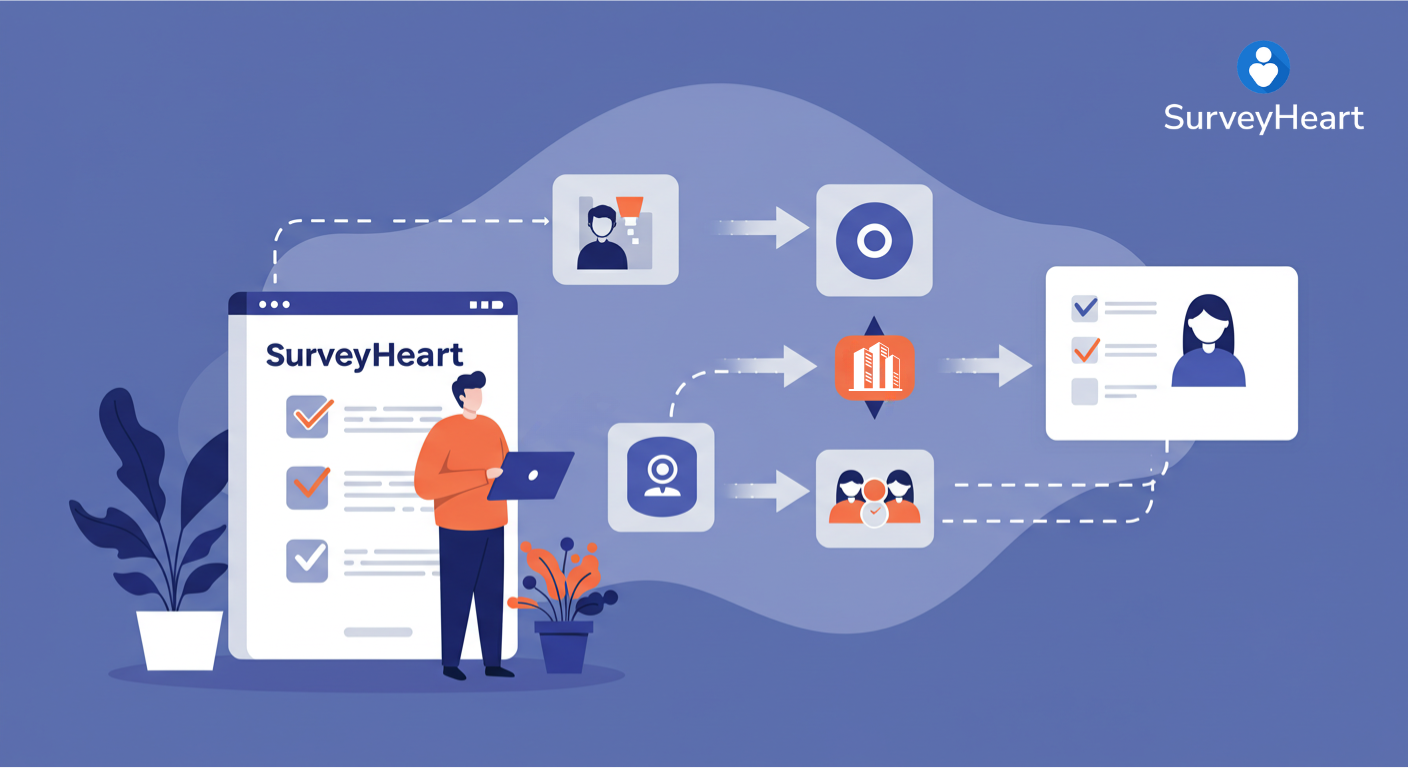
Learn how Slack built a $27 billion company by mastering user feedback loops, implementing customer suggestions, and creating products users actually want.
Introduction: From 0 to $27 Billion by Simply Listening
In 2013, Slack launched as an internal tool for a failing gaming company. Just eight years later, Salesforce acquired it for $27.7 billion, making it one of the largest software acquisitions in history. The secret? Slack obsessively listens to its users.
While most companies claim to value customer feedback, Slack built its entire product development philosophy around it. They receive over 8,000 pieces of feedback weekly and actually implement user suggestions at a rate that is three times higher than the industry average. Even more impressive: 90% of Slack’s product updates come directly from user requests.
This blog post reveals the exact feedback systems, processes, and strategies Slack uses to turn user insights into product features. You will learn how to implement similar feedback loops in your own organization, regardless of size or industry. We will explore real examples, actionable frameworks, and the specific tools that helped Slack become the fastest-growing business application in history.
The Birth of a Feedback-First Culture
From Gaming Failure to Communication Success
Slack’s origin story is a masterclass in pivoting based on user feedback. Stewart Butterfield’s team was building a game called “Glitch” when they realized their internal communication tool was more valuable than the game itself.
The Pivotal Moment:
- Initial problem: The Glitch team struggled with email overload and scattered communication
- Internal solution: Built a simple messaging tool for their own use
- User revelation: Beta testers were more excited about the communication tool than the game
- Strategic pivot: Shut down Glitch and focused entirely on Slack
“We didn’t set out to create Slack. But we listened when users told us what they really needed.” – Stewart Butterfield, Slack Founder
Early Feedback Systems That Shaped the Product
Before Slack had a single paying customer, they implemented three crucial feedback mechanisms:
- The Preview Release Strategy: Invited 15 companies to use Slack for free in exchange for detailed feedback
- Direct Founder Involvement: Stewart Butterfield personally responded to user emails for the first two years
- The 24-Hour Response Rule: Committed to responding to every piece of feedback within one business day
These early practices established Slack’s reputation as a company that genuinely cares about user input.
Slack’s Multi-Channel Feedback Architecture
1. The Twitter Support Revolution
Slack transformed Twitter from a complaint platform into a real-time feedback goldmine.
Response Statistics:
- Average response time: 10 minutes
- Daily Twitter interactions: 400+
- Customer satisfaction rate: 94%
How They Do It:
- Dedicated social media support team working in shifts
- Custom-built dashboard tracking all brand mentions
- Proactive outreach to users experiencing issues
- Public problem-solving that benefits the entire community
2. In-App Feedback Mechanisms
Slack embeds feedback collection directly into the user experience.
The /feedback Command:
Users can type “/feedback” followed by their suggestion directly in any Slack channel. This simple command:
- Captures feedback in the moment of frustration or inspiration
- Automatically includes context about the user’s current activity
- Routes feedback to appropriate product teams
- Has generated over 2 million submissions to date
Contextual Feedback Prompts:
- Pop-ups after new feature usage asking for specific impressions
- Exit surveys when users disable features
- Rating prompts after customer support interactions
- Beta feature feedback forms for early adopters
3. The Customer Advisory Board
Slack maintains relationships with 50+ enterprise customers who provide strategic feedback.
Board Structure:
- Quarterly virtual meetings with product leadership
- Annual in-person summit at Slack headquarters
- Private Slack workspace for ongoing discussions
- Early access to features in development
Impact Metrics:
- 80% of enterprise features originate from advisory board suggestions
- 60% reduction in enterprise feature development time
- 95% advisory board retention rate year over year
The Feedback Processing Machine
Stage 1: Collection and Categorization
Slack processes approximately 40,000 pieces of feedback monthly using this system.
Automated Categorization:
- Natural language processing tags feedback by topic
- Sentiment analysis determines urgency level
- Machine learning groups similar requests
- Pattern recognition identifies trending issues
Manual Review Process:
- Product managers review top 100 daily submissions
- Weekly cross-functional feedback review meetings
- Monthly trend analysis reports
- Quarterly strategic planning based on feedback themes
Stage 2: Prioritization Framework
Slack uses the RICE scoring method (modified for their needs):
- Reach: How many users will benefit?
- Impact: How much will it improve the user experience?
- Confidence: How certain are we about the solution?
- Effort: What resources are required?
- Plus Strategic Alignment: Does it fit our product vision?
Real Example:
The “Scheduled Messages” feature scored:
- Reach: 8/10 (millions of users work across time zones)
- Impact: 7/10 (significant productivity improvement)
- Confidence: 9/10 (clear implementation path)
- Effort: 5/10 (moderate development time)
- Strategic Alignment: 10/10 (supports asynchronous work)
- Result: Shipped within 3 months of initial request
Stage 3: Implementation and Communication
The Feedback Loop Closure:
- Acknowledgment: Auto-response within 1 hour
- Investigation: Human review within 24 hours
- Update: Status update within 1 week
- Resolution: Feature launch or explanation within 90 days
- Follow-up: Check-in after implementation
Case Studies: Feedback Turned Features
Case Study 1: Dark Mode
Timeline:
- 2015: First user requests for dark mode
- 2017: Request volume reaches 10,000+ monthly mentions
- 2018: Development begins after reaching critical mass
- 2019: Dark mode launches to overwhelming positive response
Impact:
- 68% adoption rate among eligible users
- 15% reduction in user-reported eye strain
- 92% satisfaction score from requesting users
Case Study 2: Workflow Builder
Origin Story:
Non-technical users repeatedly requested the ability to automate routine tasks without coding knowledge.
Development Process:
- Conducted 200+ user interviews
- Created 15 prototype versions
- Beta tested with 500 companies
- Iterated based on 5,000+ feedback points
- Launched with 99% beta tester approval
Results:
- 2 million workflows created in first year
- 30% reduction in repetitive task time
- $2.4 million average annual savings for enterprise customers
Case Study 3: Connect Feature
Problem Identified:
Users working with external partners could not collaborate efficiently across different Slack workspaces.
Solution Evolution:
- Initial feedback: “We need to invite clients to our Slack”
- Refined need: “We need secure external collaboration”
- Final feature: Slack Connect enabling cross-organization channels
Business Impact:
- 90,000+ organizations using Connect
- 3x increase in enterprise sales velocity
- 41% of Fortune 100 companies adopted within 6 months
Building Your Own Feedback Loop System
Essential Components for Any Organization
1. Multiple Collection Channels:
- In-product feedback widgets
- Email surveys and follow-ups
- Social media monitoring
- User community forums
- Regular customer interviews
2. Processing Infrastructure:
- Centralized feedback database
- Tagging and categorization system
- Priority scoring framework
- Team assignment protocols
- Response time commitments
3. Action and Communication:
- Regular feedback review meetings
- Public roadmap updates
- Feature announcement attribution
- User appreciation programs
- Closed-loop communication
Tools and Technologies to Consider
Feedback Collection:
- Intercom for in-app messaging
- Typeform for detailed surveys
- Hotjar for behavioral insights
- UserVoice for feature voting
- Discourse for community forums
Analysis and Processing:
- Productboard for feedback management
- Airtable for flexible databases
- Zendesk for support ticket tracking
- Tableau for data visualization
- MonkeyLearn for sentiment analysis
Implementation Timeline
Week 1-2: Foundation
- Choose primary feedback channels
- Set up basic collection tools
- Define categorization system
Week 3-4: Process Development
- Create prioritization framework
- Establish review schedules
- Assign team responsibilities
Week 5-6: Launch
- Announce feedback program to users
- Begin collecting and processing
- Implement first quick wins
Week 7-8: Optimization
- Analyze initial results
- Refine processes based on learnings
- Scale successful channels
Measuring Feedback Loop Success
Key Performance Indicators
Engagement Metrics:
- Feedback submission rate
- Response time average
- User participation percentage
- Repeat contributor ratio
Quality Metrics:
- Actionable feedback percentage
- Implementation success rate
- Feature adoption rates
- User satisfaction scores
Business Metrics:
- Customer retention improvement
- Net Promoter Score increase
- Support ticket reduction
- Revenue impact from feedback-driven features
Slack’s Impressive Results
By the Numbers:
- 30% of all features come from user feedback
- 85% user satisfaction with implemented suggestions
- 50% reduction in customer churn after feedback implementation
- 3x higher engagement from users who submit feedback
Common Pitfalls and How to Avoid Them
Pitfall 1: Feedback Overload
Problem: Too much feedback becomes noise.
Solution: Implement smart filtering and prioritization systems from day one.
Pitfall 2: Slow Response Times
Problem: Users feel ignored when feedback goes unacknowledged.
Solution: Automate initial responses and set clear timeline expectations.
Pitfall 3: Feature Creep
Problem: Trying to implement every suggestion dilutes product focus.
Solution: Maintain strict alignment with product vision and strategic goals.
Pitfall 4: Lack of Follow-Through
Problem: Collecting feedback without action destroys trust.
Solution: Only ask for feedback you are prepared to act on.
Frequently Asked Questions
Q1: How does Slack decide which feedback to implement?
Slack uses a combination of quantitative metrics (number of requests, user impact) and qualitative assessment (strategic fit, technical feasibility) to prioritize feedback. Features that affect the most users while aligning with product strategy get the highest priority.
Q2: What percentage of Slack features come from user feedback?
Approximately 30% of Slack’s features originate directly from user feedback, while another 60% are influenced by user input in some way. Only about 10% of features are purely internally conceived.
Q3: How quickly does Slack respond to user feedback?
Slack aims to acknowledge all feedback within 1 hour through automated systems, provide human review within 24 hours, and deliver substantive updates within 7 days. Feature implementation varies from weeks to months depending on complexity.
Q4: Can small companies implement similar feedback systems?
Absolutely. With tools like SurveyHeart, you can easily collect and review customer feedback. The key is consistency, not expensive technology.
Conclusion: Your Feedback Journey Starts Now
Slack’s $27 billion success story proves that listening to users is not just good customer service. It is a competitive advantage. By building systematic feedback loops, responding quickly to user needs, and closing the communication circle, Slack created a product that millions cannot imagine working without.
The strategies we have explored are not exclusive to billion-dollar companies. Whether you are a startup founder, product manager, or customer success leader, you can implement these feedback principles starting today. Begin with one channel, commit to regular reviews, and most importantly, act on what you learn.
Remember: every piece of feedback is a gift. It is a user taking time to help you build something better. Treat it with the respect it deserves, and your users will reward you with loyalty, advocacy, and growth.
What is your biggest challenge in collecting and acting on user feedback? Share your experience in the comments below, and let’s learn from each other’s journeys.
Start Building Your Feedback Loop Today

Ready to systematically collect and analyze user feedback like Slack? SurveyHeart makes it simple to create professional surveys, feedback forms, and interactive quizzes that help you understand what your users really want. With intuitive design tools and powerful analytics, you can start gathering actionable insights in minutes, not months.
Transform your user feedback into your competitive advantage. Try SurveyHeart for free and discover what your customers are really thinking.



